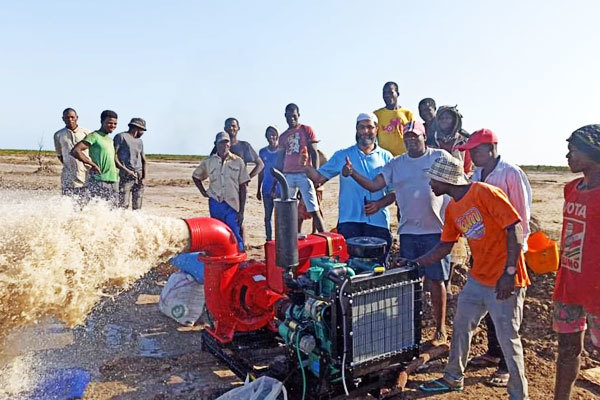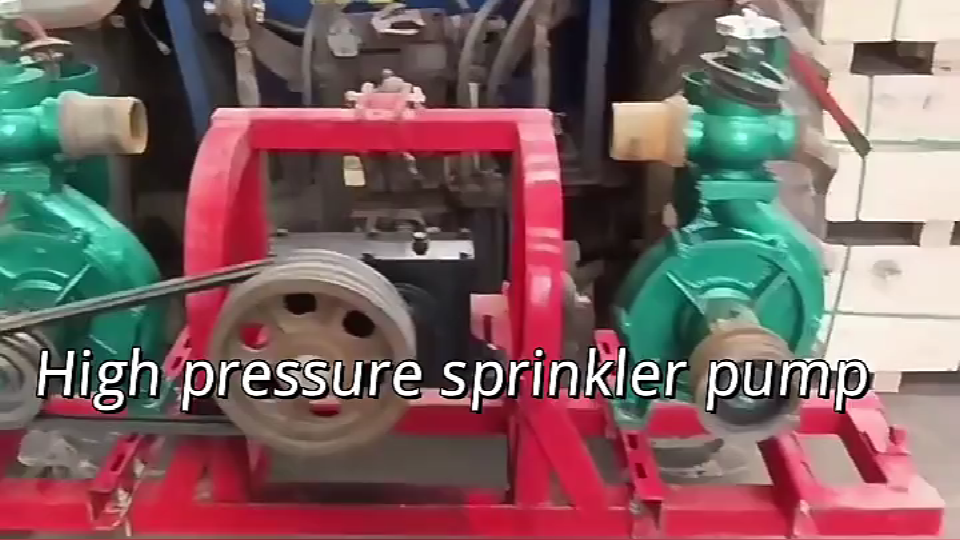Routine maintenance and upkeep of water pumps
Release time:
Oct 11,2025
**Routine Maintenance and Upkeep of Water Pumps**
Water pumps are vital components in various applications, including irrigation, drainage, and municipal water supply systems. To ensure their efficient operation and longevity, regular maintenance and upkeep are essential. This article outlines the key aspects of maintaining water pumps, including routine checks, common issues, and best practices.
**Understanding Water Pumps**
Water pumps are devices designed to move water from one location to another. They can be classified into several types, including centrifugal pumps, positive displacement pumps, and submersible pumps. Each type has its specific applications and maintenance requirements. Regardless of the type, all water pumps require regular attention to function optimally.
**Routine Maintenance Checks**
Routine maintenance is crucial for preventing breakdowns and ensuring the smooth operation of water pumps. Here are some essential checks to perform regularly:
1. **Visual Inspection**: Begin with a thorough visual inspection of the pump and its surrounding area. Look for any signs of wear, leaks, or corrosion. Ensure that the pump is clean and free of debris, which could obstruct airflow or cause overheating.
2. **Check the Motor**: The motor is the heart of the pump. Regularly check for unusual noises, vibrations, or overheating. Ensure that the motor is properly lubricated and that all electrical connections are secure.
3. **Inspect the Seals and Gaskets**: Seals and gaskets play a crucial role in preventing leaks. Over time, they can wear out or become damaged. Inspect these components regularly and replace them as needed to prevent water loss and maintain efficiency.
4. **Monitor Fluid Levels**: For pumps that require lubrication, check the fluid levels regularly. Low lubrication can lead to increased friction and wear, potentially causing pump failure.
5. **Examine the Impeller**: The impeller is responsible for moving water through the pump. Inspect it for signs of wear or damage. A damaged impeller can significantly reduce the pump's efficiency and should be replaced promptly.
6. **Check the Valves**: Ensure that all valves are functioning correctly. Sticking or malfunctioning valves can lead to pressure build-up or loss, affecting the overall performance of the pump.
**Common Issues and Troubleshooting**
Even with regular maintenance, water pumps can experience issues. Understanding common problems and their solutions can help in troubleshooting effectively:
1. **Pump Won't Start**: If the pump fails to start, check the power supply, fuses, and circuit breakers. Ensure that the motor is receiving adequate power. If the motor is operational, the issue may lie within the pump itself.
2. **Low Flow Rate**: A drop in flow rate can indicate a blockage in the system or wear in the impeller. Check for any obstructions in the intake or discharge lines and clean as necessary. If the impeller is damaged, replace it to restore optimal flow.
3. **Overheating**: Overheating can result from insufficient lubrication, a blocked cooling system, or excessive load. Ensure that the pump is adequately lubricated and that there are no obstructions in the cooling system. If the load is too high, consider reducing the demand or upgrading the pump.
4. **Excessive Noise or Vibration**: Unusual noises or vibrations can indicate misalignment or wear in the bearings. Inspect the pump for proper alignment and check the bearings for wear. Replacing worn bearings can often resolve these issues.
**Best Practices for Upkeep**
In addition to routine checks and troubleshooting, adopting best practices can enhance the longevity and efficiency of water pumps:
1. **Create a Maintenance Schedule**: Establish a regular maintenance schedule that includes all necessary checks and tasks. This proactive approach can help identify potential issues before they become significant problems.
2. **Keep Records**: Maintain detailed records of all maintenance activities, including inspections, repairs, and replacements. This documentation can be invaluable for tracking the pump's performance over time and identifying recurring issues.
3. **Train Personnel**: Ensure that personnel responsible for pump maintenance are adequately trained. They should understand the specific requirements for the pump type and be familiar with troubleshooting procedures.
4. **Use Quality Parts**: When replacing components, always use high-quality parts that are compatible with the pump. Using substandard parts can lead to further issues and reduce the pump's overall efficiency.
5. **Consider Professional Inspections**: For complex systems or large pumps, consider hiring a professional to conduct regular inspections. Experts can identify issues that may not be apparent to untrained personnel and provide recommendations for maintenance.
**Conclusion**
Routine maintenance and upkeep of water pumps are essential for ensuring their efficiency and longevity. By conducting regular checks, addressing common issues promptly, and adopting best practices, operators can minimize downtime and extend the life of their pumps. A well-maintained water pump system not only saves money on repairs but also contributes to reliable water supply and management in various applications. Regular attention to these critical components will pay off in the long run, providing peace of mind and operational efficiency.
Previous
Previous
Latest Blogs
Foreign customers said that our water-cooled diesel engine pump unit has high flow rate
The 20 sets of machines we exported have arrived at the customer's country, and the customer quickly sold them to their end users after receiving them. Then they received feedback from farmers, saying that this kind of unit is really great, energy-saving and efficient, with large flow.
Tractor water pump
6 inch diesel water pump
Contact Us
WhatsApp: 8613581189889
E-Mail: admin@shengquanmachine.com
Mobile: +86-135-8118-9889
Add: East of Dali Telecommunications Bureau, Dong'e County, Shandong Province, China







